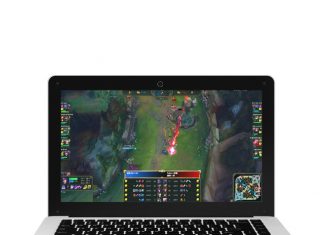Any person who is into the internet and networks will have heard about network simulation tools. There are many such utilities out there like Cisco Packet Tracer, and any common engineering student would’ve used at least one of them during his degree, whether they like it or not.
Even a complete stranger to network technology like me has used a simple tool such as an NCTU network simulator. Sure, it is outdated by a couple of years (and versions), but it is cool to actually build a network that simulates what it would produce in real life without having actually to build one in real life. So, in case you were wondering which one is a great tool to start with, which has all the advanced features but is not extremely complicated to use, Cisco Packet Tracer might be the one you want.
(Guide) Everything You Need to Know About Cisco Packet Tracer
This tool is from a very well-known telecommunications and networking giant, Cisco. If you don’t know anything about this excellent tool of theirs, you have come to (or stumbled upon) the right site. In this article, we will go through all the key aspects that make the Cisco packet tracer great. If still, you’re not having this then, first of all, download Cisco packet tracer & then just stick around this guide. Assuming that you haven’t fallen asleep at this point, here is everything you need to know about Cisco Packet Tracer.
What are the Upsides of Cisco Packet Tracer?
So, considering that you already have another network simulator, and you’re just curious as to what else is available in the market, here is a brief justification as to why you should consider checking out the Cisco Packet Tracer.
It has a feature-rich, yet easy to use graphical user interface consisting of straightforward buttons and drop-down menus. Sure, that is a common characteristic feature across all network simulators of recent times, but there’s a touch of symmetry to it. Small conveniences like automatically selecting the right mobile node when choosing between two or more different types to add to a moving host unit reduce a lot of irritation for rookies, which may arise at later stages (I remember the struggle of not getting proper signal output because I used the wrong mobile node).
Even if you are a pro, and are unlikely to commit these beginner-level mistakes, it is always nice to have some added stability through onboard hardware optimizations in a network simulator, so that does not randomly crash on you. At the same time, you are still in the debug mode (damn you, NCTUns!).
So, the bottom line is, if you are looking for a reliable, professional-grade network simulator, you need to give Cisco Packet Tracer a try. But then again, if you were in the market for a professional tool, you might’ve already heard of this, which defeats the entire point of me having to type this whole four-paragraph section in this post. Well, I’ll just leave it in here anyway. Sorry for your 2 minutes, Mr. Professional! Scroll down for download links.
System Requirements –
OS: Windows XP and above Processor: Intel Pentium 4 dual-core & above, 3+ GHz recommended Memory: 500 MB RAM and above Storage: 1 (or more) GB of HDD/SSD capacity is recommended
Now, this is a bit of a disclaimer. I have not used this tool extensively, and therefore, I am not going to comment in detail about how the experience of using the tool itself has improved over the updates. But I can give you the list of the new features added over time.
Changelogs:
The Cisco packet tracer has a bunch of new devices supported now, like the Cisco Aironet 3702 lightweight access point (wireless), Generic WLC, 2504 WLC, Generic Light Weight Access Point, and more.
This has been around for a while, but in case you were wondering, Cisco packet tracer supports file formats such as MQTT protocol based .pkp files. You can natively import your projects in the pkp format. If you have decided that you are going to switch to this tool, feel free to download it from the above links.
If you are a beginner (even one as hopeless as me), you need to check out the tutorials on this tool available over at sites like Net Academy. Just head over to this URL and enroll if you want. https://www.netacad.com/courses/intro-packet-tracer. Alternatively, you can cheap out and learn it from YouTube for free! Enjoy!












